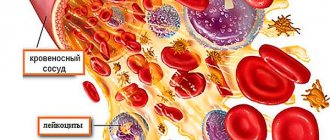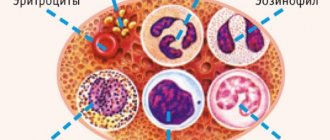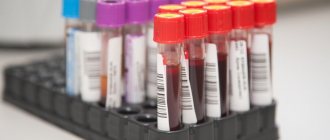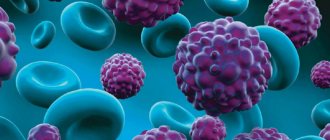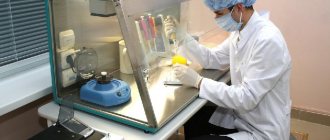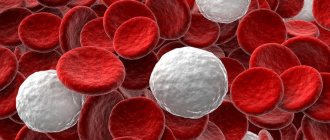The Latin suffix “-itis” always tells us about the presence of an inflammatory process in a particular organ. Thus, gastritis indicates inflammation of the stomach, otitis media indicates inflammation of the middle ear, and nephritis is an inflammation of the kidney tissue. Nephritic syndrome is a symptom complex characteristic of inflammatory kidney damage. The suffix “-oz” is a sign of the presence of a general pathological process, without symptoms of inflammation. For example, osteochondrosis is degenerative changes in the cartilage tissue of the vertebrae, hepatosis is a dystrophic change in the liver, which is based on metabolic disorders. In these conditions, signs of inflammation are usually absent. The complex of symptoms accompanying non-inflammatory kidney damage is called nephrotic syndrome. Despite the similarity in symptomatic manifestations and even in name, these two pathologies have different causes and different mechanisms of development.
- 2 Manifestations and diagnosis of nephritic syndrome
- 3 Manifestations and diagnosis of nephrotic syndrome
3.1 Video: clinical manifestations of nephrotic syndrome
- 4.1 Table: analysis of the main indicators when carrying out differential diagnosis of two syndromes
Kinds
Depending on the cause of development, primary idiopathic nephrotic syndrome and secondary glomerulopathies are distinguished. The following types of primary idiopathic nephrotic syndrome are distinguished:
- minimal change disease;
- membranous glomerulopathy;
- focal segmental glomerulosclerosis;
- membrane-proliferative (mesangiocapillary) glomerulonephritis;
- other proliferative glomerulonephritis.
Secondary nephrotic syndrome occurs within the framework of the following pathology:
- Infections (infectious endocarditis, syphilis, leprosy, hepatitis B and C, mononucleosis, cytomegalovirus infection, chickenpox, HIV, malaria, toxoplasmosis, schistosomiasis);
- Use of medications and narcotic drugs (gold preparations, penicillamine, bismuth preparations, lithium, probenecid, high doses of captopril, paramethadone, heroin);
- Systemic diseases (systemic lupus erythematosus, Sharpe's syndrome, rheumatoid arthritis, dermatomyositis, Henoch-Schönlein purpura, primary and secondary amyloidosis, polyarteritis, Takayasu's syndrome, Goodpasture's syndrome, dermatitis herpetiformis, Sjögren's syndrome, sarcoidosis, cryoglobulinemia, ulcerative colitis;
- Metabolic disorders (diabetes mellitus, hypothyroidism, familial Mediterranean fever);
- Malignant neoplasms (Hodgkin's disease, non-Hodgkin's lymphoma, chronic lymphocytic leukemia, multiple myeloma, malignant melanoma, carcinoma of the lung, colon, stomach, breast, cervix, ovary, thyroid and kidney);
- Allergic reactions (insect bites, hay fever, serum sickness);
- Congenital diseases (Alport syndrome, Fabry disease, sickle cell anemia, alpha1-antitrypsin deficiency).
Nephrotic syndrome can sometimes develop in patients suffering from preeclampsia, IgA nephropathy, and renal artery stenosis.
The morphological classification of nephrotic syndrome according to the ICD includes the following forms of kidney pathology:
- minor glomerular disorders;
- focal and segmental glomerular damage;
- membranous glomerulonephritis;
- mesangial proliferative glomerulonephritis;
- diffuse endocapillary proliferative glomerulonephritis;
- diffuse mesangiocapillary (membranoproliferative) glomerulonephritis;
- dense sediment disease;
- diffuse crescentic glomerulonephritis;
- Kidney amyloidosis.
According to the activity of the process, complete, partial remission and relapse are distinguished - newly emerging proteinuria after complete remission or an increase after partial remission.
Determination of the state of kidney function in nephrotic syndrome is based on 2 indicators: glomerular filtration rate and signs of renal damage. Kidney damage is structural and functional changes in the kidneys that are detected by blood tests, urine tests, or imaging tests.
Complications of the disease
Complications of the disease can be associated both with the syndrome itself and with medications prescribed during treatment. Complications of the disease may include the following:
- The development of infectious diseases - pneumonia, pleurisy, erysipelas, pneumococcal peritonitis. Untimely medical care can lead to the death of the patient.
- Crisis is a very rare and severe complication of the disease. As a rule, it is accompanied by an increase in body temperature, abdominal pain, vomiting, nausea, and loss of appetite.
- Pathology of the renal arteries is thrombosis, which leads to renal infarction.
- Thromboembolism of the pulmonary artery.
- Brain damage due to stroke.
Medicines used to treat the disease can also cause complications. Most often they are expressed in allergic reactions, a stomach or intestinal ulcer may form, and diabetes mellitus is also possible. All of the complications listed above are very dangerous for the patient and threaten his life.
Causes
Some people substitute the concepts nephrotic and nephritic syndrome. In medicine, these concepts are divided. Thus, nephrotic syndrome is characterized by kidney damage. With nephritic syndrome, an inflammatory process and other associated symptoms develop.
The development of nephritic syndrome is associated with the penetration of antigens from the blood into the renal structures. After their penetration into the kidneys, immune mechanisms are activated, and an immune response to the foreign body occurs. Nephritic syndrome can develop due to the following reasons:
- viral or bacterial infection;
- autoimmune diseases;
- the effect of radiation;
- after administration of a vaccine or serum;
- tumor development;
- toxic effects after drinking alcohol or taking drugs;
- vascular damage due to diabetes;
- intoxication of the body with chemicals of various classes;
- chronic pathologies of the urinary tract;
- increased physical activity;
- sudden changes in air temperature.
Nephritic syndrome can develop both against the background of an inflammatory process and non-infectious disorders - depending on this, treatment tactics are developed.
The multidisciplinary Yusupov Hospital employs experienced specialists who accompany the patient during the treatment process. Thus, if this syndrome is of an autoimmune nature, consultation with a rheumatologist is necessary. Make an appointment
Nephrotic syndrome - urine test
When there is a suspicion of nephrotic syndrome, tests make it possible not only to confirm the diagnosis, but also to determine treatment tactics. One of the most revealing is a urine test, in which, in addition to the presence of elevated protein levels, the following parameters are revealed for this pathology:
- cloudy urine;
- increased density;
- alkaline reaction;
- the presence of leukocytes and erythrocytes;
- the presence of loop and wax cylinders;
- presence of cholesterol crystals;
- a large number of microbial bodies.
Symptoms
With nephritic syndrome, patients with typical complaints come to the Yusupov Hospital. Signs of nephritic syndrome are:
- the appearance of blood in the urine;
- change in the color of urine - it becomes purple;
- the formation of edema, the most pronounced swelling of the face, eyelids, legs in the evening;
- feeling of thirst and slow urine production.
- A pathological process in the kidneys can cause the following symptoms in patients:
- weakness, nausea;
- pain in the lumbar region that appears at night;
- headaches that appear when the body weakens;
- signs of infectious respiratory diseases;
- Body temperature rises extremely rarely.
Acute nephritic syndrome develops 7-10 days after exposure to a provoking factor or infection. When the first signs of pathological kidney function appear, you should use the services of specialists from the Yusupov Hospital and visit the diagnostic class=”aligncenter” width=”1024″ height=”682″[/img]
Diagnostics
During an outpatient examination of patients with nephrotic syndrome, doctors at the Yusupov Hospital carry out the following basic diagnostic measures:
- clinical blood test;
- general urine analysis;
- biochemical blood test (total protein, albumin, urea, creatinine, K, Na, Ca, glucose and cholesterol levels in blood serum);
- calculation of glomerular filtration rate using the Cockcroft-Gault formula;
- enzyme immunoassay for viral hepatitis B and C;
- blood test for HIV;
- Ultrasound examination of the kidneys and abdominal organs.
Additional diagnostic examinations that are carried out on an outpatient basis include daily proteinuria or protein/creatinine, albumin/creatinine ratios, immunological methods for studying blood serum, and determining the concentration of Cyclosporin-A in the blood serum.
If necessary, a computed tomography scan can be performed. Upon admission of a patient to the therapy clinic, nephrologists at the Yusupov Hospital prescribe the following mandatory diagnostic examinations:
- kidney biopsy;
- complete blood count (before and after kidney biopsy);
- general urinalysis (before and after kidney biopsy);
- daily proteinuria or protein/creatinine, albumin/creatinine ratios;
- ultrasound examination of the kidneys (after biopsy);
- coagulogram;
- morphological diagnosis of kidney tissue biopsy;
- immunohistochemistry.
Patients have the opportunity to undergo complex studies at partner clinics located in Moscow.
Additional diagnostic examinations that are carried out at the hospital level include electron microscopy of kidney tissue biopsy, determination of cryoglobulins in blood serum, electrophoresis of urine proteins, immunofixation of blood proteins for paraproteins, determination of the concentration of Cyclosporin-A in blood serum. If necessary, sternal puncture, fibroendogastroscopy, colonoscopy, and radiography of the flat bones of the skull can be performed. According to indications, computed tomography, Doppler ultrasound scanning of renal vessels is performed, and the level of tumor markers in biological fluids is determined. If a toxic origin of nephrotic syndrome is suspected, the presence and concentration of bismuth, lithium, paramethadone, and heroin in the blood are determined.
The patient is advised by specialized specialists depending on the suspected cause of nephrotic syndrome:
- oncologist - if paraneoplastic nephropathy is suspected;
- phthisiatrician – if a specific process is suspected;
- rheumatologist – if a systemic disease is suspected.
An ophthalmologist examines the fundus of the eye. The surgeon is invited for a consultation in case of nephrotic crises to exclude acute surgical pathology. A consultation with a neurologist is prescribed if neurolupus or systemic vasculitis is suspected. A hematologist examines patients with suspected multiple myeloma, a light chain disease. If a patient with nephrotic syndrome has a prolonged fever, he or she is consulted by an infectious disease specialist. Differential diagnosis of nephrotic syndrome is carried out with diseases that occur with severe edematous syndrome: liver cirrhosis, congestive chronic heart failure.
Establishing diagnosis
In diagnosis, the main thing is not to determine the clinical picture of nephrotic syndrome in a patient (to do this, it is enough to identify edema and prescribe a urine test), but to clarify its root cause. Sometimes a person has been sick for a long time (for example, with diabetes or hypothyroidism), and nephritis develops as a complication. In this case, diagnostics are also required to clarify the patient’s condition. Therefore, examination of the patient requires special attention of an experienced nephrologist.
Factors taken into account:
- History - in pediatrics it is important to know how the pregnancy and childbirth proceeded. The doctor will ask both the adult and the child about diseases of relatives, allergies, previous infections, clarify when the first symptom appeared, an acute or chronic process, and ask in detail about the course of the disease and the implementation of medical recommendations.
- Examination - mandatory measurement of blood pressure, pulse, determination of respiratory rate. In case of nephrotic syndrome, an objective examination involves auscultation of the heart and lungs, palpation of the abdomen, assessment of the condition of the skin, mucous membranes, and thyroid gland.
- Laboratory data - a general blood test will reveal possible signs of an inflammatory process in the body (accelerated ESR, leukocytosis), as well as anemia. A biochemical study will confirm hypercholesterolemia and hypoproteinemia. When assessing urine, not only the presence of protein is taken into account, but also other indicators - specific gravity, the number of blood cells, the presence of salts. If infectious diseases are suspected, the doctor will prescribe additional tests for HIV, hepatitis, sputum bacterioscopy, and ELISA.
- Instrumental methods – the main one is ultrasound. It will not evaluate the functioning of the kidney, but will identify anatomical changes and congenital anomalies. Dopplerography of the renal vessels will clarify the condition of the arteries and microcirculation disorders. Nephroscintigraphy will allow you to assess the degree of damage to the renal parenchyma.
- Morphological study - it is likely that it will be necessary to prepare microslides from tissues of various organs. In childhood, a kidney biopsy is required in cases of prednisolone-resistant form of the disease.
Based on the results obtained, the specialist, following the algorithm, must identify the underlying disease that caused nephrotic syndrome. Perhaps, to prevent an incorrect diagnosis, the doctor will consider it necessary to conduct an examination of the heart, liver, and lungs.
Treatment
Treatment of nephritic syndrome has the following goals:
- achieving weakening or disappearance of signs of the disease;
- elimination of extrarenal symptoms (arterial hypertension, edema) and complications (electrolyte disturbances, infection, nephrotic crisis);
- slowing the progression of chronic kidney disease and delaying its terminal stage with the help of dialysis and kidney transplantation.
The patient, depending on the severity of nephrotic syndrome, is recommended free or bed rest (if the patient’s condition is serious and there are complications). Dosed physical activity – 30 minutes 5 times a week. Doctors recommend that patients stop smoking and drinking alcohol. The diet is balanced, with an adequate amount of protein (1.5-2g/kg), caloric intake according to age. In the presence of arterial hypertension and edema, limit the use of table salt (less than 1-2g per day).
Pathogenetic therapy after establishing a morphological diagnosis begins in the therapy clinic and continues on an outpatient basis. Significant edema is treated with diuretics. Diuretics are not prescribed for diarrhea, vomiting, or hypovolemia. For long-term edema, furosemide is prescribed intravenously as a single bolus or torasemide orally. To treat patients with refractory edema, a combination of loop and thiazide-like or potassium-sparing diuretics is used. If there is a high risk of developing nephrotic crisis, a combination of albumin and diuretics is used.
If the patient experiences resistant edema in combination with renal failure in the acute period of nephrotic syndrome, hemodialysis with ultrafiltration is performed until the critical state of renal failure is eliminated and diuresis appears.
Cardiologists at the Yusupov Hospital take a differentiated approach to the choice of treatment method for patients with nephritic syndrome. In the absence of symptoms of acute kidney injury, ACE inhibitors or angiotensin AT1 receptor blockers are prescribed for antihypertensive purposes, but not in combination. If high blood pressure persists, calcium channel blockers are used. If the patient has a rapid pulse or there are signs of chronic heart failure, beta blockers are additionally prescribed.
Pathogenetic therapy of nephritic syndrome depends on the morphological variant. It is prescribed only after a kidney biopsy and clarification of the morphological diagnosis.
When treating the disease, the disease that caused the nephrotic syndrome is also treated. If parasites or helminths are detected, antiparasitic (anthelminthic) drugs are prescribed. Patients with neoplasms undergo chemotherapy, radiation treatment, and surgery. For diabetic nephropathy, endocrinologists treat diabetes mellitus, nephrologists prescribe drugs that have a nephroprotective effect.
At the onset of nephrotic syndrome, patients are prescribed methylprednisolone or prednisolone. Upon achieving complete or partial remission, the dose of prednisolone is gradually reduced.
Patients who do not achieve complete or partial remission after taking a full dose of prednisolone for 16 weeks are defined as steroid-resistant. They are treated with combination therapy with cyclosporine-A and a minimal dose of prednisolone.
50-75% of patients with nephrotic syndrome who respond to steroid therapy experience relapses. If nephrotic syndrome reoccurs, prednisolone is prescribed. If relapses occur three or more times within one year or there is a steroid-dependent form, combination therapy with low doses of prednisolone in combination with one of the following groups of drugs is used:
- alkylating agents;
- calcineurin inhibitors;
- antimetabolites.
Patients with nephrotic syndrome and chronic kidney disease are prescribed statins. For resistant nephrotic syndrome, rituximab is used. Treatment of nephrotic syndrome in systemic lupus erythematosus is carried out depending on the class of lupus nephritis.
The pathogenetic treatment started in the therapy clinic is continued in the patient’s outpatient and home settings under monthly monitoring of the results of laboratory data (clinical blood test, general urine test, biochemical blood test). Proteinuria levels are monitored using test strips once every 1-2 weeks, and patients regularly measure blood pressure. If the amount of proteins in the urine increases, the protein/creatinine ratio is determined and immunosuppressive therapy is adjusted. If the patient does not respond to immunosuppressive therapy, a repeat kidney biopsy is performed in a therapy clinic.
If the cause of nephrotic syndrome is infectious diseases, antibiotic therapy is administered. Drugs are selected for each patient individually depending on the type of infectious agent. At a high risk of arterial and venous thrombosis, low molecular weight heparins are administered subcutaneously for a long time.
Advantages of treatment at the Yusupov Hospital
For the treatment of patients with nephrotic syndrome, all conditions have been created at the Yusupov Hospital:
- Chambers with a European level of comfort;
- The latest diagnostic equipment and innovative laboratory diagnostic methods;
- Providing patients with high-quality dietary nutrition and individual personal hygiene products;
- Attentive attitude of medical staff to the wishes of patients and their relatives.
- Nephrologists adhere to domestic and European clinical guidelines for the treatment of nephrotic syndrome. Doctors take an individual approach to choosing a treatment method for each patient.
If you have signs of nephrotic syndrome, call the Yusupov Hospital contact center and make an appointment with a nephrologist. Hospitalization of patients with acute nephrotic syndrome or its complications at the Yusupov Hospital is carried out around the clock, any day of the week.
Make an appointment
Author
